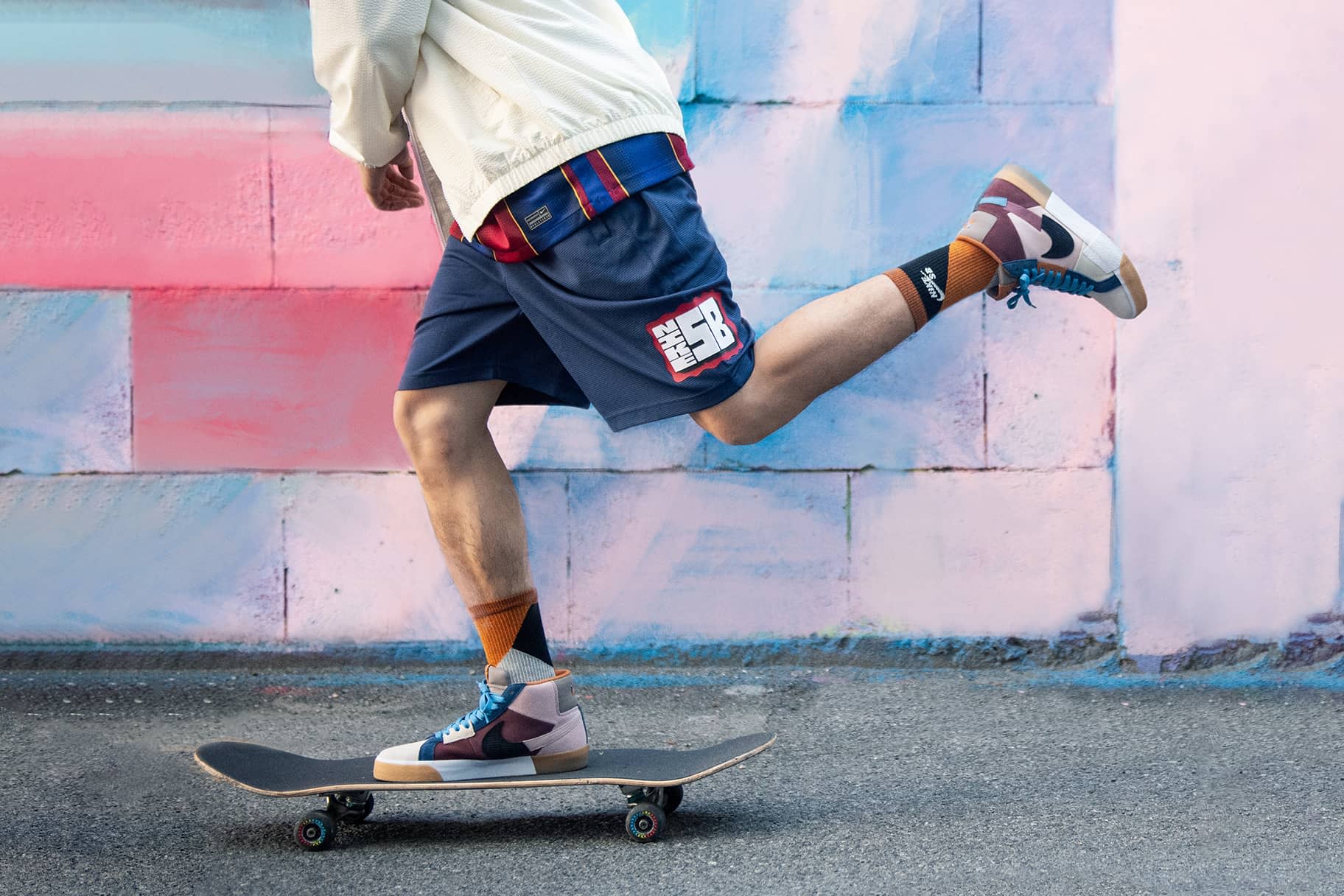
Skateboarding has become a popular and influential subculture around the world. From its humble beginnings as a backyard hobby to a globally recognized sport, skateboarding has captured the hearts of millions. Whether you’re a seasoned skateboarder or just an admirer of the sport, there’s no denying the fascinating world of skateboards.
In this article, we will explore 19 interesting facts about skateboards that will give you a deeper understanding and appreciation for this adrenaline-fueled activity. From the evolution of skateboard design to the rise of legendary skateboarders, get ready to dive into the history and culture behind one of the most beloved action sports.
Key Takeaways:
- Skateboarding originated in California in the 1960s, and it has since become a global phenomenon with approximately 11 million skateboarders worldwide.
- Skateboarding offers various health benefits, fosters a unique culture and community, and continues to evolve with new tricks and innovations, making it an exciting and dynamic sport.
Facts 1: Skateboarding originated in California.
Skateboarding first gained popularity in the 1960s in Southern California, where surfers started attaching wheels to small wooden boards to simulate surfing on land.
The first commercial skateboard was introduced in the 1950s.
The first commercially produced skateboard was the Roller Derby Skateboard, which hit the market in It featured a 2×4 wooden plank with roller skate wheels attached to the bottom.
Skateboarding was included in the X Games for the first time in 1995.
The X Games, an extreme sports competition, added skateboarding to its lineup in It quickly became one of the most popular events, showcasing the skill and creativity of skateboarders from around the world.
Tony Hawk is considered one of the most influential skateboarders of all time.
Tony Hawk, known as “The Birdman,” revolutionized skateboarding with his technical tricks and innovative style. He is credited with popularizing the sport and taking it to new heights of popularity.
Skateboarding will make its debut in the 2020 Summer Olympics in Tokyo.
Skateboarding is set to make its Olympic debut in the 2020 Summer Olympics in Tokyo. It will feature two disciplines: street skateboarding and park skateboarding.
The skateboard deck is typically made of seven layers of maple wood.
The skateboard deck, the main part of the skateboard, is usually made of seven layers of maple wood pressed together. This construction provides the necessary strength and flexibility for tricks and maneuvers.
The average lifespan of a skateboard deck is around 2-3 years.
With regular use and wear, a skateboard deck typically lasts for about 2-3 years. However, this can vary depending on the rider’s style, frequency of use, and the quality of the deck.
The first skateboard wheels were made of clay.
In the early days of skateboarding, the wheels were made of clay. These wheels provided minimal grip and were prone to wear and tear. Modern skateboard wheels are typically made of polyurethane, which offers better performance and durability.
The first skateboard parks were constructed in the 1970s.
As skateboarding grew in popularity, dedicated skate parks started to emerge in the 1970s. These parks provided skaters with ramp structures and obstacles designed specifically for skateboarding.
There are approximately 11 million skateboarders worldwide.
Skateboarding has become a global phenomenon, with an estimated 11 million people actively participating in the sport worldwide. Its popularity continues to grow, especially among younger generations.
The ollie is one of the most fundamental skateboarding tricks.
The ollie, invented by Alan “Ollie” Gelfand in the late 1970s, is considered the foundation of modern skateboarding. This trick involves popping the tail of the skateboard and sliding the front foot up to level the board in the air.
Skateboarding is not just for boys.
Skateboarding is often associated with male participants, but female skateboarders have been making significant contributions to the sport. Female skaters like Lizzie Armanto and Nora Vasconcellos have gained recognition for their skills and achievements.
Skateboarding can provide various health benefits.
Skateboarding is not only a thrilling activity but also offers several health benefits. It improves balance, coordination, flexibility, and can be a great form of cardiovascular exercise.
Skateboarding has its own culture and community.
Skateboarding has developed a unique culture and community with its own fashion, music, and slang. Skaters often form tight-knit groups, supporting and inspiring each other in their skateboarding journeys.
Skateboarding has its own set of terminology.
Skateboarding has a distinctive vocabulary, with terms such as “grind,” “kickflip,” “vert,” and “pop shove-it” used to describe various tricks and techniques. Learning the terminology is essential for understanding and conversing within the skateboarding community.
Skateboarding requires protective gear for safety.
Due to the risks involved, it is important for skateboarders to wear protective gear such as helmets, elbow pads, knee pads, and wrist guards to minimize the risk of injury while performing tricks and maneuvers.
Skateboarding can be a form of self-expression.
Skateboarding provides individuals with a creative outlet for self-expression. Skaters often develop their unique style and incorporate personal flair into their tricks and overall skateboarding aesthetic.
Skateboarding has inspired various forms of art.
Skateboarding culture has influenced art forms such as street art, photography, and filmmaking. Many artists have used skateboarding as a source of inspiration, capturing the energy and spirit of the sport in their work.
Skateboarding continues to evolve.
Skateboarding is constantly evolving, with new tricks, styles, and innovations emerging year after year. The sport pushes the boundaries of what is thought possible, inspiring a new generation of skaters to push their limits.
Conclusion
After learning these 19 fascinating facts about skateboards, it’s clear that they are much more than just a means of transportation or a recreational activity. Skateboarding has a rich history, evolving from homemade wooden boxes to the high-tech and precision-engineered boards we see today. Skateboarding culture has influenced fashion, music, and art, making it a significant part of popular culture.From the invention of the kicktail to the development of specialized skate parks, skateboarding has continuously pushed the boundaries of creativity and innovation. It has also proven to be a valuable tool for self-expression and personal growth for many individuals around the world. Whether it’s performing gravity-defying tricks or simply cruising through the streets, skateboarding offers a unique experience that captures the hearts of enthusiasts young and old.So, the next time you see someone riding a skateboard, remember the rich history and culture behind it. Skateboarding is not just a sport; it’s a lifestyle and an art form that continues to captivate and inspire people globally.
FAQs
1. When was the skateboard invented?
The modern skateboard was invented in the 1950s by surfers who wanted to ride the waves when there were no waves.
2. How fast can a skateboard go?
Skateboards can reach speeds of around 20-25 miles per hour, depending on several factors such as rider skill, board design, and terrain.
3. Are skateboarding and longboarding the same?
No, they are not the same. Skateboarding utilizes smaller boards and is more focused on tricks and technical moves, while longboarding involves longer boards and is mainly focused on cruising and downhill racing.
4. Can skateboarding be dangerous?
Like any sport or physical activity, skateboarding does come with inherent risks. It’s important to wear protective gear such as a helmet, knee pads, and elbow pads to minimize the risk of injury.
5. How can I start skateboarding?
To start skateboarding, you’ll need a skateboard, a safe and suitable place to practice, and some basic protective gear. It’s also recommended to take lessons or learn from experienced skateboarders to ensure proper technique and safety.
6. How long does it take to learn skateboarding?
The time it takes to learn skateboarding varies from person to person. Some individuals may pick it up quickly, while others may take longer. Consistent practice and determination are key to progressing in skateboarding.
7. Are there different types of skateboards?
Yes, there are various types of skateboards designed for different styles and disciplines. Some examples include street skateboards, cruiser boards, longboards, and electric skateboards.
8. Can skateboarding be a competitive sport?
Yes, skateboarding can be a competitive sport. Skateboarders can participate in events such as street competitions, vert contests, and downhill races.
9. Is skateboarding suitable for all ages?
Skateboarding can be enjoyed by people of all ages, from young children to older adults. There are even skateboarding communities specifically tailored for different age groups.
10. Can skateboarding be a form of exercise?
Yes, skateboarding can provide a great cardiovascular workout and help improve balance, coordination, and flexibility. It engages various muscle groups, making it a fun and effective form of exercise.
Skateboards have come a long way since their humble beginnings in California. From the first commercial skateboard introduced in the 1950s to the sport's inclusion in the X Games and upcoming debut at the 2020 Summer Olympics, skateboarding has evolved into a beloved lifestyle with its own unique culture and community. Whether you're a seasoned skateboarder looking for the perfect bag to carry your gear, curious about the origins of National Go Skateboarding Day, or interested in learning more about influential figures like Stacy Peralta, there's always something new to discover in the world of skateboarding.
Was this page helpful?
Our commitment to delivering trustworthy and engaging content is at the heart of what we do. Each fact on our site is contributed by real users like you, bringing a wealth of diverse insights and information. To ensure the highest standards of accuracy and reliability, our dedicated editors meticulously review each submission. This process guarantees that the facts we share are not only fascinating but also credible. Trust in our commitment to quality and authenticity as you explore and learn with us.


